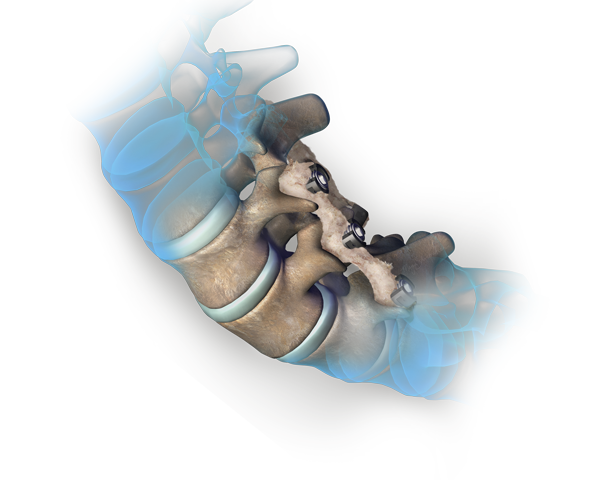Trinity Elite
Allograft with Viable Cells
Exclusively processed by MTF Biologics, Trinity Elite™ is an allograft that contains the three essential components needed to support bone formation: an osteoconductive scaffold, verified osteoinductive potential, and osteogenic cells such as viable adult mesenchymal stem cells (MSCs), osteoprogenitor cells (OPCs), and osteoblasts.1,2, 3
Trinity Elite can eliminate the need for harvesting autograft, which helps reduce operative time, expenses, and complications for the patients. Trinity allografts have been clinically shown to be safe and efficacious in aiding in bone repair, including successful outcomes in patients with multiple comorbidities.1,2
Key Features
- A complete autograft bone graft substitute that provides the essential elements to support bone healing
- Peer-reviewed, prospective clinical evidence supporting safety and efficacy in cervical and lumbar spinal fusion procedures1,2
- Moldable and cohesive cortical fibers4
- Minimum 70% cell viability with minimum cell counts of 750,000 cells per cc of which 250,000 are MSC, OPC, and other bone-forming cells
- Cancellous granules contain endogenous cells and enhance packability
- Compatible with O-Genesis™ and RAPID™ graft delivery systems
- Osteoinductive potential is tested on every lot
- 15+ years on the market, 350,000+ patients implanted

Footnotes
- Vanichkachorn J, et al. A prospective clinical and radiographic 12-month outcome study of patients undergoing single-level anterior cervical discectomy and fusion for symptomatic cervical degenerative disc disease utilizing a novel viable allogeneic, cancellous, bone matrix (trinity evolution™) with a comparison to historical controls. Eur Spine J, 2016.
- Wind, et al. Twelve-Month Results from a Prospective Clinical Study Evaluating the Efficacy and Safety of Cellular Bone Allograft in Subjects Undergoing Lumbar Spine Fusion. Neurology International, 2022; 14, pp. 875-883.
- Park, D. K. et al. (2023). Twenty-four-month interim results from a prospective, single-arm clinical trial evaluating the performance and safety of cellular bone allograft in patients undergoing lumbar spinal fusion. BMC musculoskeletal disorders, 24(1), 895.
- Martin, G. J., Jr, et al. (1999). New formulations of demineralized bone matrix as a more effective graft alternative in experimental posterolateral lumbar spine arthrodesis. Spine, 24(7), 637–645.